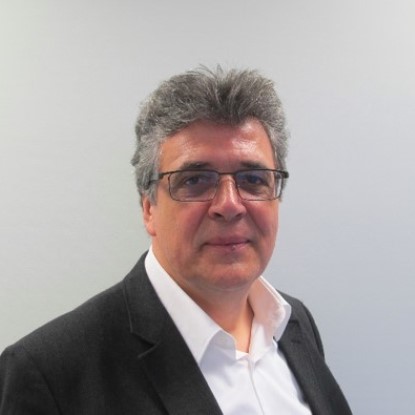Team Leader: Ersin Polat
Together with our cooperation partners we established the liquid crystal technology for microwave applications. Since many years, IMP is working in close cooperation with Merck on the synthesis and implementation of liquid crystals for micro and millimeter wave frequencies. Targeted frequency range is above 15 GHz up to several THz.
An overview on recent development can be found in E. Polat et al. “Reconfigurable Millimeter-Wave Components Based on Liquid Crystal Technology for Smart Applications” Crystals 10, no. 5: 346. https://doi.org/10.3390/cryst10050346.
Microwave Liquid Crystal Technology from Darmstadt is a synonym for high performance tunable microwave components, not only in academia, but also in industry. While our papers on LC technology have won many prizes at international conferences, a team of alumni of IMP founded a spin-off to commercialize this technology for smart antenna systems. The first antennas for satellite communication have been announced recently. You will find more information on the spin-off Alcan Systems at http://www.alcansystems.com.
The name “liquid crystal” is a combination of the main properties of this material, as it exhibits a phase of matter that has properties between those of a conventional liquid and those of a solid crystal. LC used for microwave applications can be described as uniaxial anisotropic material, featuring different effective permittivities, depending on the orientation to an applied RF field. The effective permittivity of the LC material is depending on the orientation of the applied RF field. The orientation of the LC molecules can be controlled by electric or magnetic fields and by mechanical anchoring at surfaces. Tunable components are usually based on transmission lines with tunable propagation constant. The simplest geometry is based on a microstrip line.
The work on ferroelectric materials for tunable microwave components has been started many years ago in cooperation with the Universität Karlsruhe and the Forschungszentrum Karlsruhe. Since many years, the focus of this collaboration is research on BST thick films. Together with our colleagues from material science at TU Darmstadt (ATFT) and industrial partners, we also investigate different materials for thin-film and bulk ceramic ferroelectric devices. The targeted frequency range is below 15 GHz.
Components implementing ferroelectric materials use the electric-field dependent material’s polarization to realize a tunable capacitance. As for semiconductor devices, the capacitance of a varactor can be changed by an electrostatic field applied to the electrodes. The most prominent material in this class is Barium Strontium Titanate. Different technologies can be applied for the processing of BST-based tunable components. Thin-film components are produced by evaporation methods such as sputtering or pulsed laser deposition (PLD). These films usually have a thickness of less than 500nm and show a single or polycrystalline behavior. Thick-film components are resulting from various printing technologies such as screen printing or ink-jet printing. The poly-crystalline films have a thickness above 1 µm after sintering. This sintering step requires a temperature of about 1250°C. By implementing composite materials, e.g. by adding ZnO-B2O3, this temperature can be reduced to around 800°C, making BST composite materials compatible to low temperature co-fired ceramics (LTCC). Poly-crystalline cylindrical bulk ceramic pellets are obtained from uniaxial compressed green bodys after sintering at 1250°C. The end faces of the pellet are metallized in a screen-printing process, forming a tunable parallel plate capacitor with a thickness of 1mm and a diameter of 8-16mm. Applications for these pellets are tunable high-power matching networks for industrial plasma depositioning or etching processes.



